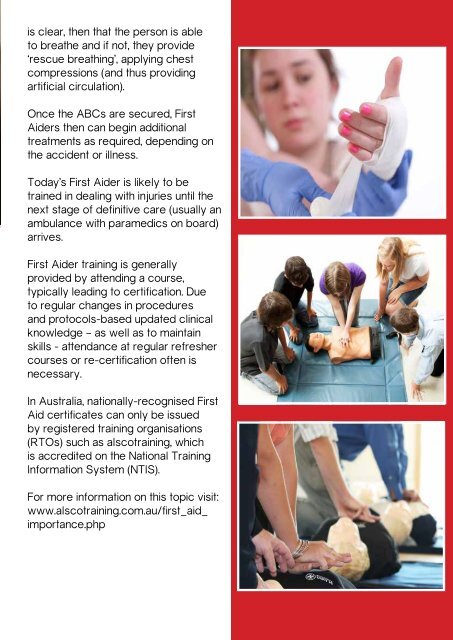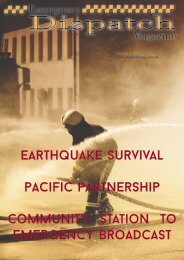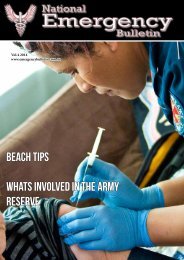National Emergency Magazine Volume 8 2015
Create successful ePaper yourself
Turn your PDF publications into a flip-book with our unique Google optimized e-Paper software.
is clear, then that the person is able<br />
to breathe and if not, they provide<br />
‘rescue breathing’, applying chest<br />
compressions (and thus providing<br />
artificial circulation).<br />
Once the ABCs are secured, First<br />
Aiders then can begin additional<br />
treatments as required, depending on<br />
the accident or illness.<br />
Today’s First Aider is likely to be<br />
trained in dealing with injuries until the<br />
next stage of definitive care (usually an<br />
ambulance with paramedics on board)<br />
arrives.<br />
First Aider training is generally<br />
provided by attending a course,<br />
typically leading to certification. Due<br />
to regular changes in procedures<br />
and protocols-based updated clinical<br />
knowledge – as well as to maintain<br />
skills - attendance at regular refresher<br />
courses or re-certification often is<br />
necessary.<br />
In Australia, nationally-recognised First<br />
Aid certificates can only be issued<br />
by registered training organisations<br />
(RTOs) such as alscotraining, which<br />
is accredited on the <strong>National</strong> Training<br />
Information System (NTIS).<br />
For more information on this topic visit:<br />
www.alscotraining.com.au/first_aid_<br />
importance.php





